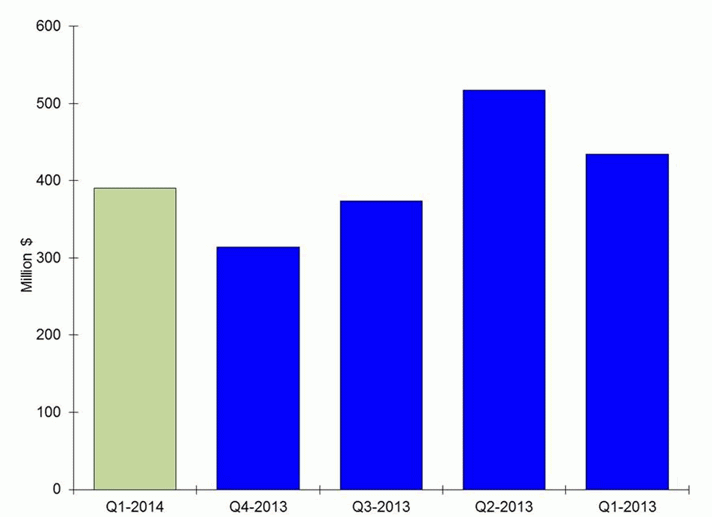Selective Cuttings
Solid Q1 results for the forest sector
July 21, 2014
The financial performance of Canadian forest sector firms continues to be solid despite various logistic disruptions. In the first quarter of 2014, the ten largest publicly traded Canadian forest companies1 reported a positive combined operating income of $391 million. Though it was down 10% relative to the first quarter in 2013, it rose 24% compared to the fourth quarter of 2013. Nine of these companies reported positive operating income, the same as the first quarter in 2013, though less than the previous quarter when all firms reporting positive operating income.
Financial results of the largest Canadian publicly traded forest companies
The relatively strong financial results in the first quarter of 2014 reflected modest improvements in global pulp markets. Operating incomes of firms with more exposure to pulp and paper products continued to improve. Almost all, with the exception of Resolute, posted positive operating income, and improved significantly relative the same period of 2013, mainly thanks to higher Northern Bleached Softwood Kraft (NBSK) prices, a lower Canadian dollar and improved operating rates. Average NBSK pulp list prices saw solid gains in all regions during the first quarter of 2014, with the North American NBSK pulp list price up 13% from that of the first quarter of 2013, reaching to the highest level of the past two years.
Meanwhile, companies with major exposure to wood products remained strong due to the stabilizing lumber and plywood prices. An increase in pulp prices caused higher chip prices, which also contributed to earnings from the wood products segment. Together these factors offset the negative impacts of significant logistics challenges, such as railcar unavailability, and the 28-day trucking strike at the Metro Vancouver Port.
Going forward, North American lumber consumption is forecast to rebound in the second quarter of 2014, with residential construction markets picking up steam. Offshore lumber markets, particularly demand from Asia and other emerging markets, are expected to remain stable. It is likely there will be increased offshore shipments to compensate the loss associated with the strike at the Metro Vancouver Port. However, pulp prices, including NBSK prices, are under pressure as new global hardwood pulp supply has since entered the market. Therefore, the financial results of Canadian forest companies are expected to be solid for next quarter, but uncertainties remain.
1Including Domtar, Resolute, Cascades, West Fraser Timber, Canfor, Tembec, Norbord, Mercer, Catalyst, and Western Forest Products

